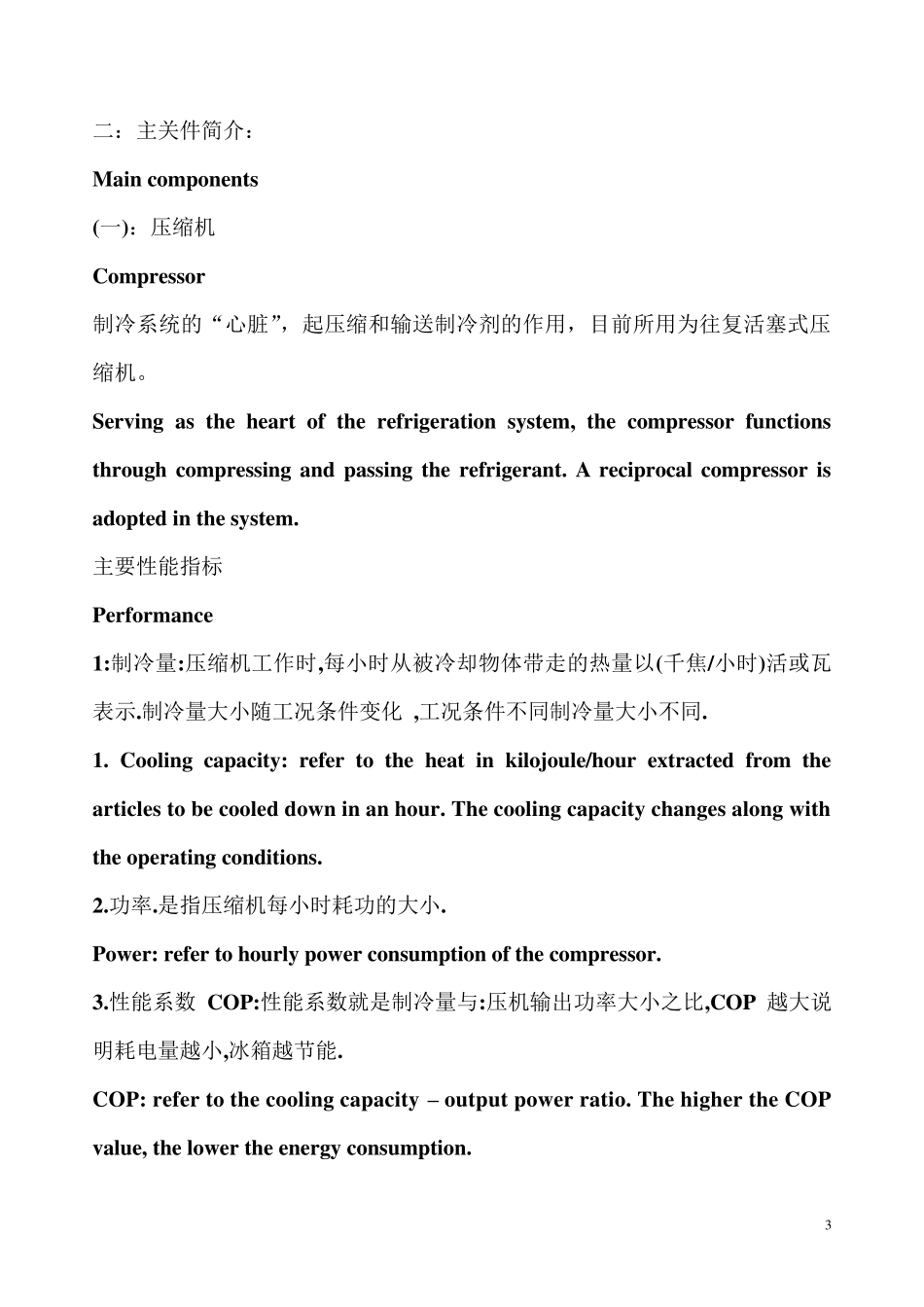1 制冷原理培训教材 Refrigeration principle training material 2 一:制冷原理简介 Refrigeration principle 本系统属于蒸汽压缩式制冷循环,主要包括压缩机、冷凝器、毛细管、干燥过滤器、蒸发器 5 个部件,经过压缩、冷凝、节流、蒸发四个过程不断循环,制冷剂周期性的发生从蒸汽变为液体,从液体变为蒸汽的状态变化,不端的把冰箱内的热量转移到冰箱外部,从而达到制冷目的。 The appliance incorporates a vapor compressor refrigeration system that consists of compressor, condenser, capillary, filter drier and evaporator and accomplishes the refrigeration through the cycle of compression, condensation, throttling, and evaporation. The process repeats and extracts the heat from the fridge compartment by having the refrigerant evaporated in the evaporator and liquefied in the condenser. 3 二:主关件简介: Main components (一):压缩机 Compressor 制冷系统的“心脏”,起压缩和输送制冷剂的作用,目前所用为往复活塞式压缩机。 Serving as the heart of the refrigeration system, the compressor functions through compressing and passing the refrigerant. A reciprocal compressor is adopted in the system. 主要性能指标 Performance 1:制冷量:压缩机工作时,每小时从被冷却物体带走的热量以(千焦/小时)活或瓦表示.制冷量大小随工况条件变化 ,工况条件不同制冷量大小不同. 1. Cooling capacity: refer to the heat in kilojoule/hour extracted from the articles to be cooled down in an hour. The cooling capacity changes along with the operating conditions. 2.功率.是指压缩机每小时耗功的大小. Power: refer to hourly power consumption of the compressor. 3.性能系数 COP:性能系数就是制冷量与:压机输出功率大小之比,COP 越大说明耗电量越小,冰箱越节能. COP: refer to the cooling capacity – output power ratio. The higher the COP value, the lower the energy consumption. 4 压缩机三个重要附件: Three essential accessories: 1. 启动控制器 Start control 电冰箱刚开始启动时,PTC 元...


